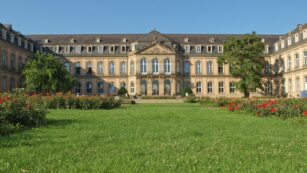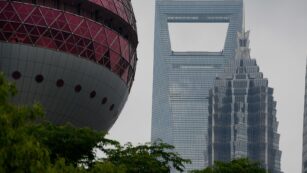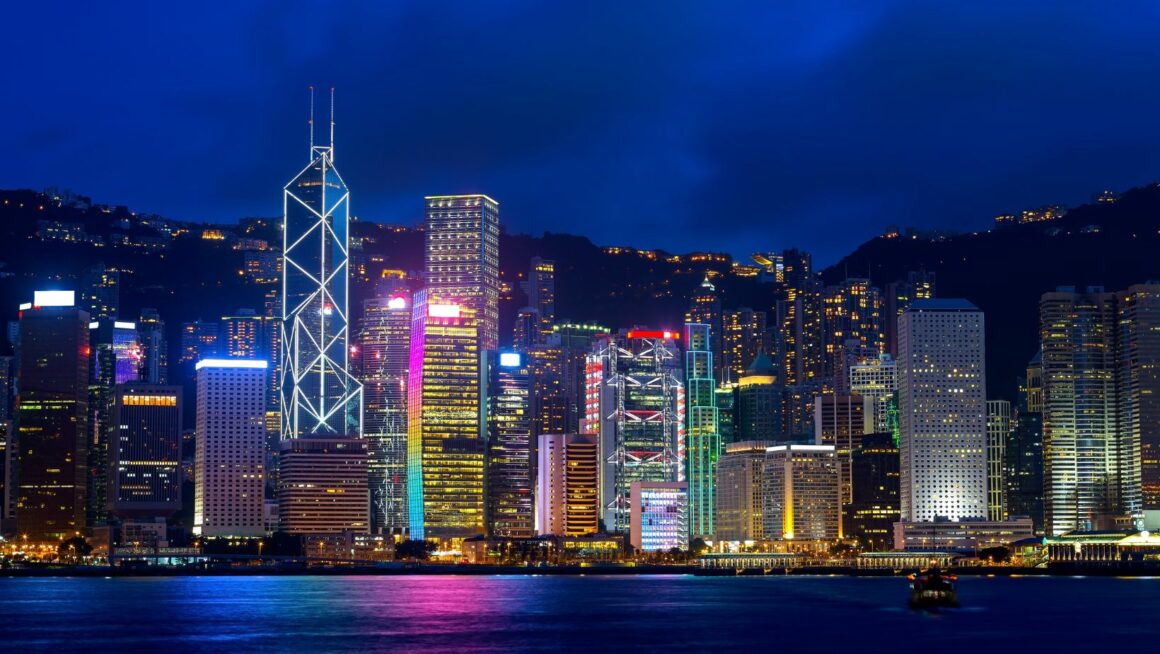The 1980s marked a transformative era in architecture, characterized by bold experimentation and distinct departures from modernist ideals. This decade witnessed the rise of postmodernism, a style that embraced complexity and contradiction, often incorporating historical references in a new and eclectic way. Architects of the 1980s sought to communicate ideas through a visually engaging language that often broke from the austerity of their predecessors.
1980s Architecture
The 1980s marked a dynamic period in architectural design, characterized by diverse styles and unprecedented creativity. This section delves into the characteristics of the era and the architects who defined its unique aesthetic.
Characteristics of the Era
 1980s architecture is notable for its eclectic approach, blending traditional elements with bold, new forms. This era saw the rise of postmodernism, a style that countered the stark minimalism of modernism by incorporating complex shapes, vibrant colors, and historic details. Buildings from this period often featured playful, ironic twists on classic architecture, including exaggerated columns, whimsical ornamental motifs, and vibrant facades. Key projects, like the Portland Building by Michael Graves, exemplify this trend with their colorful, ornamented surfaces and asymmetrical forms. The design philosophy of the time embraced a sense of theatricality and spectacle, making architectural spaces not only functional but also visually captivating.
1980s architecture is notable for its eclectic approach, blending traditional elements with bold, new forms. This era saw the rise of postmodernism, a style that countered the stark minimalism of modernism by incorporating complex shapes, vibrant colors, and historic details. Buildings from this period often featured playful, ironic twists on classic architecture, including exaggerated columns, whimsical ornamental motifs, and vibrant facades. Key projects, like the Portland Building by Michael Graves, exemplify this trend with their colorful, ornamented surfaces and asymmetrical forms. The design philosophy of the time embraced a sense of theatricality and spectacle, making architectural spaces not only functional but also visually captivating.
Influential Architects and Their Styles
 Several architects emerged during the 1980s who profoundly influenced the architectural landscape with their distinctive styles. Michael Graves became a prominent figure in postmodern architecture with his vivid, whimsically styled buildings. His designs, such as the Denver Public Library, showcased a mix of cubic forms and classical elements, all rendered in a palette of bright and contrasting colors. Another key figure, Frank Gehry, revolutionized architecture with his deconstructive approach, which featured fragmented structures that seemed to defy traditional forms and methods. His design for the Gehry House in Santa Monica stands as a pivotal example, with its unconventional use of corrugated metal and chain-link fencing, creating a visually striking and fragmented aesthetic. Meanwhile, Norman Foster introduced high-tech architecture, which celebrated technological innovation through the use of modern materials like steel and glass to create sleek, streamlined buildings.
Several architects emerged during the 1980s who profoundly influenced the architectural landscape with their distinctive styles. Michael Graves became a prominent figure in postmodern architecture with his vivid, whimsically styled buildings. His designs, such as the Denver Public Library, showcased a mix of cubic forms and classical elements, all rendered in a palette of bright and contrasting colors. Another key figure, Frank Gehry, revolutionized architecture with his deconstructive approach, which featured fragmented structures that seemed to defy traditional forms and methods. His design for the Gehry House in Santa Monica stands as a pivotal example, with its unconventional use of corrugated metal and chain-link fencing, creating a visually striking and fragmented aesthetic. Meanwhile, Norman Foster introduced high-tech architecture, which celebrated technological innovation through the use of modern materials like steel and glass to create sleek, streamlined buildings.
Notable Architectural Projects of the 1980s
The HSBC Building, Hong Kong
 Designed by Norman Foster and completed in 1985, the HSBC Building epitomizes high-tech architecture with its visible steel structure and glass façade, illustrating the era’s fascination with showcasing technology. The building’s design promotes functionality and modern aesthetics, integrating natural light and offering flexibility in its interior spaces. The construction incorporated advanced technologies, making it a significant architectural feat and a crucial example of technology’s impact on design during the decade.
Designed by Norman Foster and completed in 1985, the HSBC Building epitomizes high-tech architecture with its visible steel structure and glass façade, illustrating the era’s fascination with showcasing technology. The building’s design promotes functionality and modern aesthetics, integrating natural light and offering flexibility in its interior spaces. The construction incorporated advanced technologies, making it a significant architectural feat and a crucial example of technology’s impact on design during the decade.
The Portland Building, Oregon, USA
Completed in 1982 by architect Michael Graves, the Portland Building became a famous example of postmodern architecture with its colorful and ornate façade. Its design includes a mix of traditional forms and ironic motifs, challenging conventional architectural norms. The building’s use of garish colors and large-scale graphics attracted both admiration and criticism, revealing the polarizing nature of architectural experimentation in the 1980s.
The Neue Staatsgalerie, Stuttgart, Germany
 James Stirling’s Neue Staatsgalerie, completed in 1984, showcases a dramatic departure from functionalist design by combining elements from historic architectural styles with a contemporary twist. Its eclectic blend of colors, materials, and classical forms exemplifies the playful yet thoughtful approach of postmodernism, making it a critical study in contrast and harmony.
James Stirling’s Neue Staatsgalerie, completed in 1984, showcases a dramatic departure from functionalist design by combining elements from historic architectural styles with a contemporary twist. Its eclectic blend of colors, materials, and classical forms exemplifies the playful yet thoughtful approach of postmodernism, making it a critical study in contrast and harmony.
Each of these projects not only illustrates distinctive architectural philosophies but also encapsulates the zeitgeist of the 1980s, embodying a shift towards more expressive and technologically integrated designs that marked the period as a significant epoch in the evolution of global architecture. These buildings stand as beacons of the innovative spirit that defined the decade, each contributing uniquely to the architectural legacy of the 1980s.
Lloyd’s Building, London, UK
Richard Rogers’ Lloyd’s Building, completed in 1986, is another landmark of high-tech architecture. It features external ducts and staircases, which create a unique and dynamic exterior while optimizing the interior layout for business use. This design reflects the decade’s architectural narrative around expressing the functional components of a building externally, merging aesthetics with practicality effectively.

